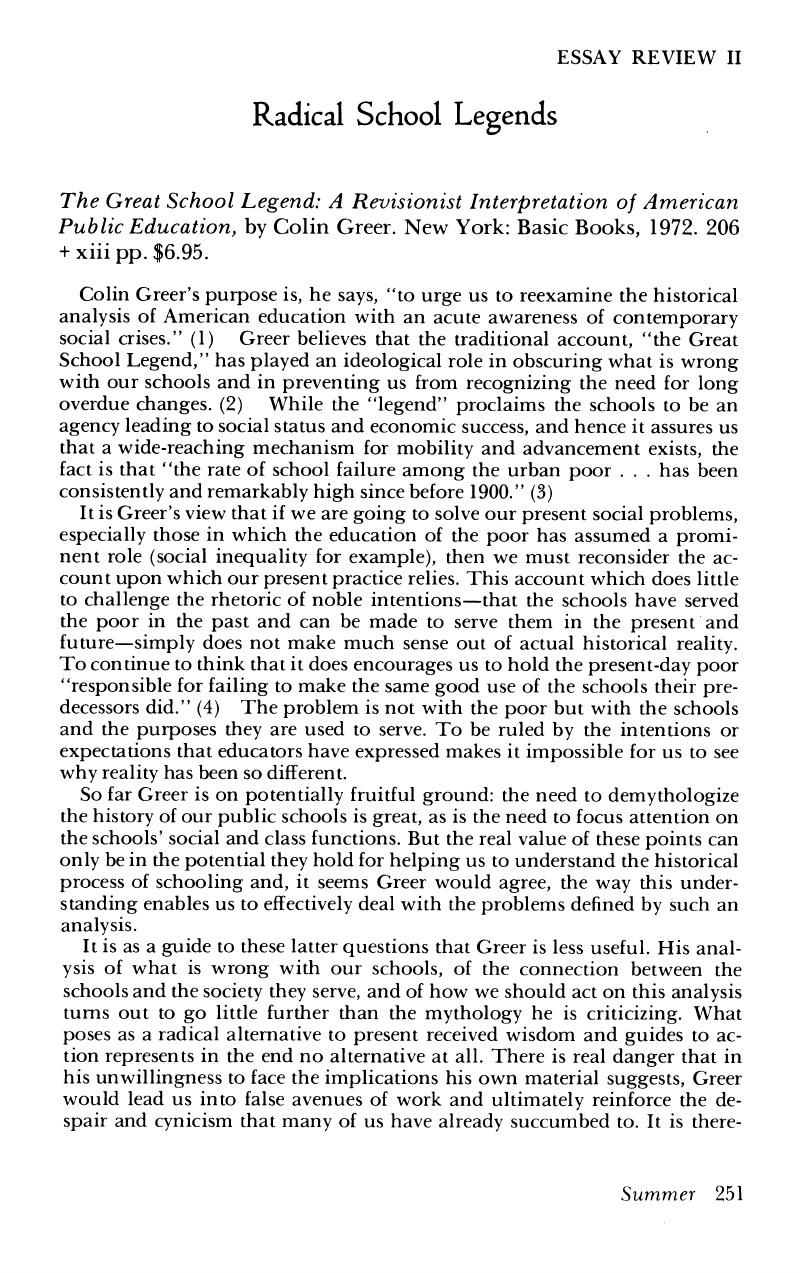Published online by Cambridge University Press: 24 February 2017

1. The Great School Legend, pp. 5–6.Google Scholar
2. Ibid., p.4.Google Scholar
3. Ibid. Google Scholar
4. Ibid. Google Scholar
5. Ibid., p. 152 Google Scholar
6. Ibid., pp. 55,64.Google Scholar
7. Ibid., pp. 5, 74.Google Scholar
8. Ibid., p.37.Google Scholar
9. See for example, ibid., pp. 65, 70, 71, 113, 115.Google Scholar
10. Ibid., pp. 106 and 108.Google Scholar
11. Ibid., p. 105.Google Scholar
12. Ibid., p.9.Google Scholar
13. Ibid., p. 106.Google Scholar
14. Ibid., p.5.Google Scholar
15. Ibid., p. 137.Google Scholar
16. Ibid., pp. 77, 115, 152.Google Scholar
17. For an example of the kind of analysis that is valuable see Hammack, David, “Participation in Major Decisions in New York City, 1890–1900: The Creation of Greater New York and the Centralization of the Public School System” (unpublished Ph.D. dissertation, Columbia University, 1973), chapter six.Google Scholar
18. Ibid., p.99.Google Scholar
19. See my “The Rewriting of American Educational History,” New York University Education Quarterly (Summer, 1974).Google Scholar
20. The Great School Legend, p. 64, also pp. 77–78.Google Scholar
21. Ibid., p. 153.Google Scholar
22. Ibid., pp. 118–19, 128.Google Scholar
23. Ibid., p. 137.Google Scholar
24. Ibid., p. 153.Google Scholar
25. Ibid., p.155.Google Scholar
26. Greer's language—he talks of “elites” and “various orders” of society—remains vague but it is easy to imagine, as writers like Miriam Wasserman and Paul Lauter and Florence Howe have, that it is a beleaguered middle class that is most apt to feel threatened. Any other assumption makes Greer's prescription of forcing a redistribution of opportunity hard to accept. If it is a powerful ruling class that is being fought, its control of opportunity would seem impregnable by the means he suggests. Yet if he does have the middle class in mind, then its power and influence in the schools requires explanation—it is powerful enough apparently to impose its “cooling out” desires on the schools, but it is too weak to deny or change the credentials that will be its undoing.Google Scholar
27. The Great School Legend, p. 155.Google Scholar
28. Ibid., p.36.Google Scholar
29. Ibid., p.37.Google Scholar
30. See Ibid., pp. 115,148.Google Scholar
31. Ibid., see pp. 155–56.Google Scholar
32. Ibid., pp. 154–55.Google Scholar
33. It would be fruitful to examine the relationship between municipal budgetary and debt emergencies, an emerging teachers union and the introduction of what have been considered “progressive” innovations. (In pre-World War I New York City, a perfect example, took this form of the Gary Plan, praised by, among others, John Dewey and Randolph Bourne. Teachers and local communities strongly and successfully opposed it.) Google Scholar